1. Back to Basics
Refocus your time and energy on the daily fundamentals of good health and wellbeing:
- Three timely & nutritious meals, and sufficient water
- At least 20 minutes of aerobic exercise
- At least 10 minutes of meditation or relaxing yoga
- At least 6-7 hours of sound sleep
Sticking to this basic self-care routine helps reduce stress, boost mood, improve immunity, and enhance quality of life.
2. Disconnect from Technology
Living in Covid-19 times has resulted in drastically increased screen time – whether it be a virtual family game night or working from home. At least an hour before you go to bed every day, switch off all your electronic devices. Disengaging from technology enables us to reprogram our habits, create boundaries with work, and get a good night’s sleep.
3. Lean on Your Support System
It’s okay to ask for help. Open up about what you are experiencing with someone you trust. Even if they cannot personally empathise with what you are going through, expressing your emotions to them will help relieve some of your burden. Do not hesitate to seek professional help – the earlier, the better.
4. Journal Your Way to Joy
Writing is powerful in many ways. On one hand it is a relaxation technique that can be used to release and recognise emotions, and on the other, it is a magnificent tool to manifest positivity into our lives.
Create a list of everything that is causing you stress – this will help you identify the root cause of your burnout. Is it individual, interpersonal, organisational, or a combination of all three factors? Once you recognise the causing factor(s), you are better able to take necessary action.
5. Attitude of Gratitude
We recommend you maintain a gratitude journal where you jot down at least five things every day that you are truly grateful for. This helps us remember and appreciate the positive things we already have in our lives. By operating from an attitude of gratitude, we make space to attract more positive people and situations into our life.
6. Take a Vacation
The most crucial aspect of this tip is not the holiday destination itself, but making a conscious decision to completely switch off from work. Set an “Out of Office” email, delegate time sensitive tasks to trustworthy subordinates, and wholeheartedly enjoy your time off.
7. rTMS Treatment for Burnout
Repetitive Transcranial Magnetic Stimulation (rTMS) is a NICE UK, Health Canada and FDA approved non-invasive and drug-free treatment, which involves the use of electromagnetic pulses to stimulate under-active brain cells to work more effectively. The procedure does not require anaesthesia, hospitalisation, or recovery time, and has markedly fewer side-effects than antidepressant medication.
According to Van Noppen et al. (2020), rTMS significantly improves attention and memory, which tend to deteriorate with the onset of burnout.
It targets the prefrontal cortex, which is the area of the brain that regulates mood, emotional wellbeing, motivation, and social skills. As opposed to merely treating the symptoms, it addresses the root cause of the problem by reorganising brain pathways and patterns. High-frequency rTMS on the left frontal lobe has stress-relieving and mood-elevating effects on patients suffering from occupational stress (In Kim et al., 2016). 75% of our clients have experienced significant improvement, while 45% report complete remission.
Neuromed Clinic now has advanced rTMS treatment (Thetaburst), which is the most up to date technology in treating burnout, depression and anxiety. If you have any questions about rTMS, please email lisa@neuromedclinic.com.




